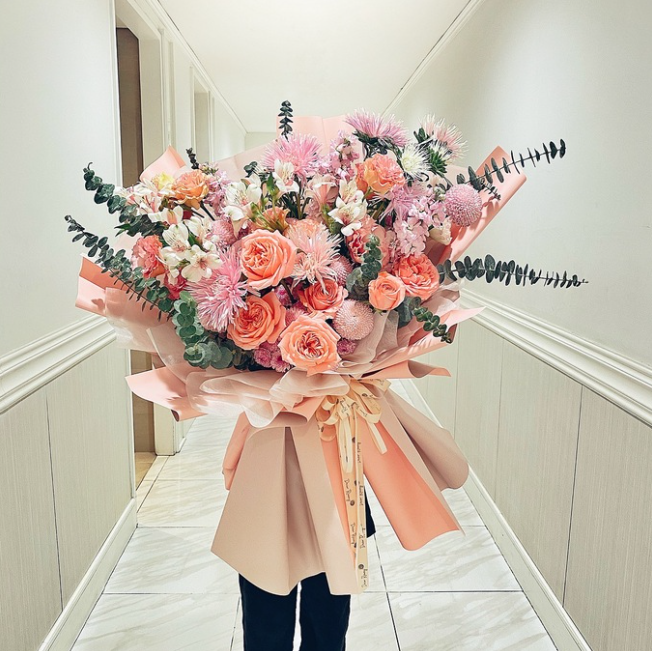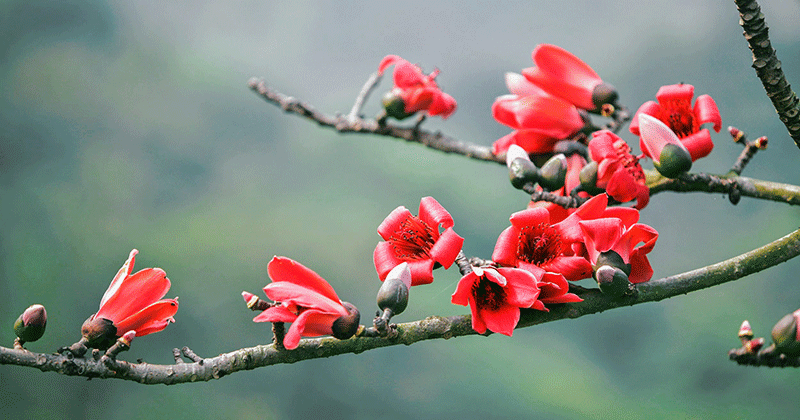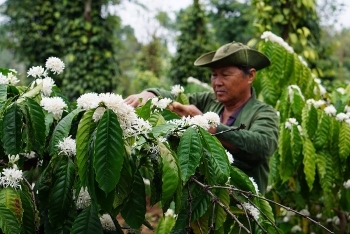Vietnamese woman creates 'immortal' flowers that fresh 10 years
| March 8 flowers gained big sales despite skyrocketed prices | |
| Stunninng beauty of red silk cotton flowers in March | |
| The gorgeousness of coffee flowers under the eyes of local photographer |
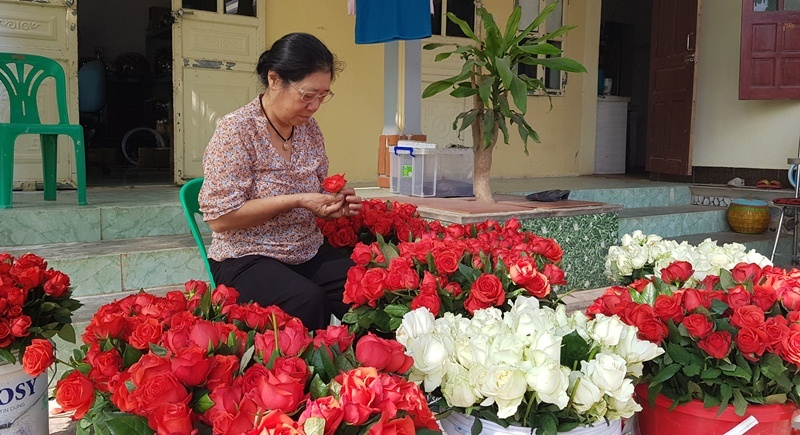 |
| Selecting flowers is an important phase. (Photo: Vietnamnet) |
The small house in Hamlet 3 in Trung Thanh Commune of Nong Cong District in Thanh Hoa province is where Viet lives and embalms flowers to create immortal flowers, according to Vietnamnet.
In fact, the place where she works only has one old wooden table. She has been working hard there for the last 12 years to create beautiful flowers that help aestheticize life.
In 2001, because of difficult living conditions, she had to leave Vietnam for Thailand as a guest worker. She found it interesting to create immortal flowers and decided that she needed to learn how to make them.
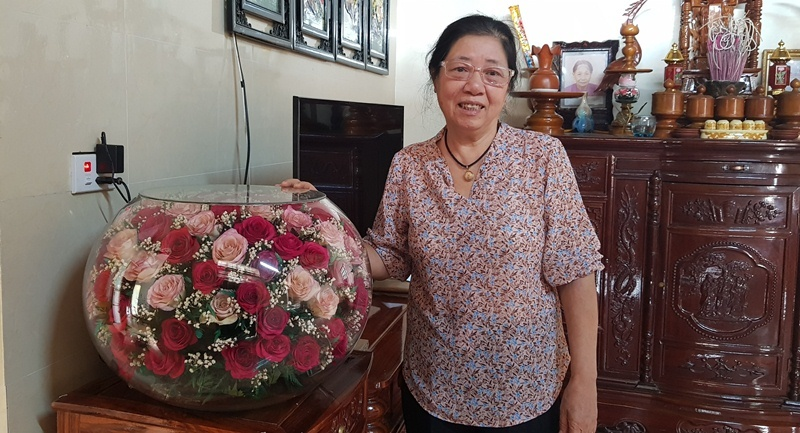 |
| Photo: Vietnamnet |
As she was very industrious and creative, she made products with special characteristics of her own. When she became more skillful, the Thai owner of the workshop assigned her to manage the workshop and train workers.
In 2005, after returning to Vietnam, she began applying the technology to create immortal flowers in her poor home village. At that moment, these flowers were luxurious and expensive, unaffordable to the majority of people. Therefore, it was not easy to sell the flowers.
However, because of her passion, she still tried to develop the business. She spent two years to travel to many places to learn about market demand, and seek flower supply sources and supporting materials. In 2008, she began launching her first products into the market.
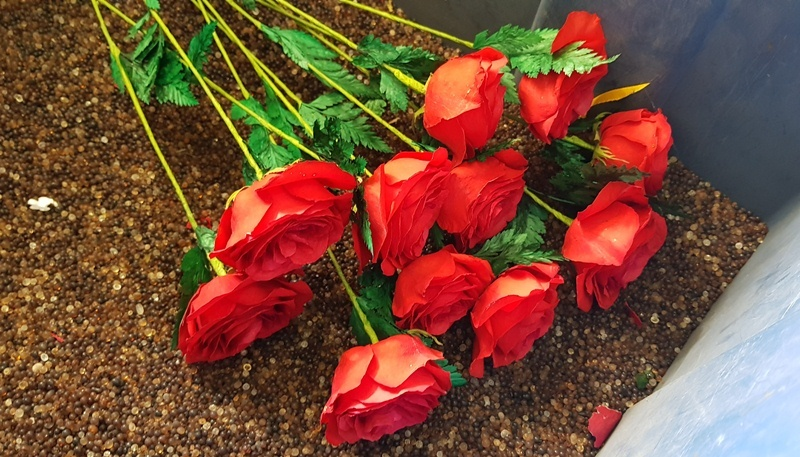 |
| Dried flowers look like fresh flowers. (Photo: Vietnamnet) |
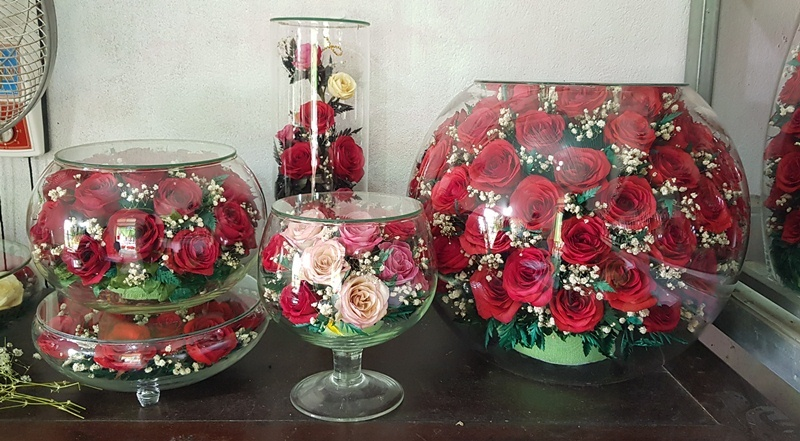 |
| The flowers have the life expectancy of over 10 years. (Photo: Vietnamnet) |
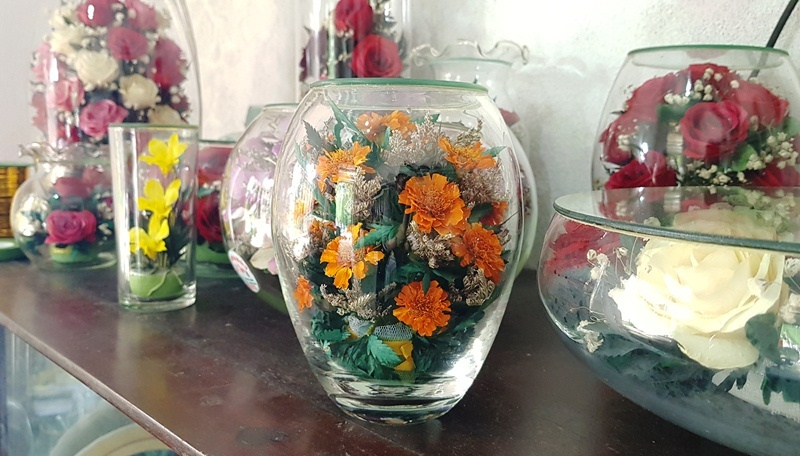 |
| In addition to roses, Viet also creates daisies and lilies. (Photo: Vietnamnet) |
Flower embalming technology without chemicals
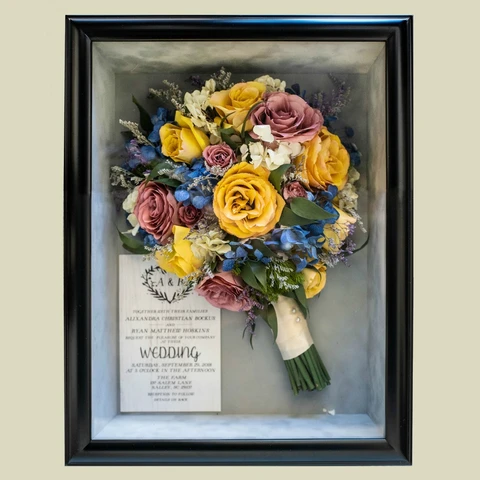 |
| Photo: My Flowers Forever |
Realizing that the Thai flower embalming technique cannot keep flowers fresh for a long time, Viet invented a technique of her own. Her flowers have the life expectancy of up to 10 years.
According to Vietnamnet, Viet affirmed that her ‘immortal’ flowers do not use any chemicals. Petals dry, but they look like natural flowers. The color of flowers remains scarlet and chlorophyll can be preserved.
“At first, you need to choose high-quality flowers. After that, you cut branches and put them into a box which contains a kind of sand and cover the box for seven days. Later, it is necessary to put the flowers into another box which contains another kind of materials and embalm for three more days, so that flowers become sturdier before arranging them in glass vases,” Viet said about the flower treatment process.
Viet makes many different products, from a vase with one flower to one with 100 flowers, priced from VND120,000 to VND4 million, depending on the number of flowers.
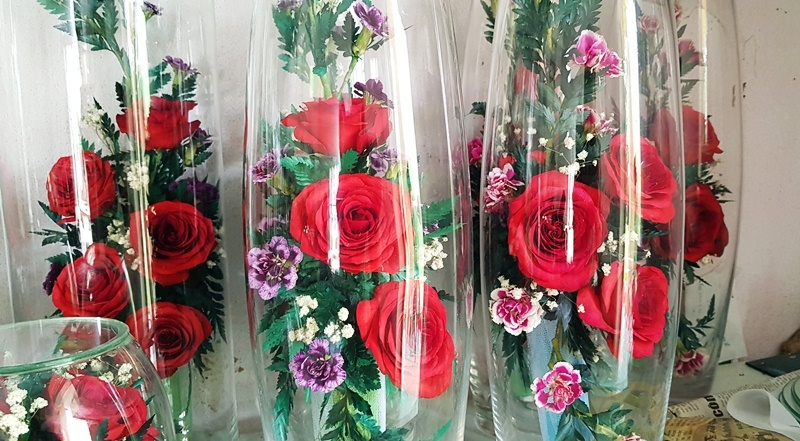 |
| The cheapest product is priced at VND120,000 per flower, and the most expensive is VND4 million per vase of flowers. (Photo: Vietnamnet) |
In order to have a pretty vase of flowers, one not only needs to choose beautiful flowers and embalm them, but also know the art of arranging flowers. Workers skillfully arrange flowers and create styles while not affecting the flower quality.
The difference in her products is that they are dry, keep their natural color and are not dyed like other products in the market. The superiority of the products is that they are non-toxic to workers and environmentally friendly.
Her products are available in Hanoi, Vung Tau and Nghe An.
Immortal flowers were one of four excellent creative products that received credit from the Thanh Hoa provincial Women’s Union at the 2019 Women's Day of Creation - Start-up.
What is flower preservation?
Flower preservation has existed since early history, although deliberate flower preservation is a more recent phenomenon. In the Middle East, the bones of pre-historic man were discovered with delicate wild flowers probably as a tribute to a passing loved one. Evidence of deliberate use of specific flowers is indicated by the pollen grains that were present. Brightly colored and vivid flowers were also found in Egyptian tombs. These flowers were approximated to be 4,000 years old. In the sixteenth century medicinal nosegays began to give way to ornamental ones. Flowers essentially started to be used for decorative purposes such as jewels, fans and gloves. During the Elizabethan Age the once familiar ruff was replaced by soft lacy collars, and bosom flowers also became popular.
Out of the Victorian era grew the fascination of communicating with flowers carried in the nosegays. The idea of the language of flowers developed, when it was decided that giving and receiving a bouquet of flowers, when the flowers themselves carry a meaning, gives much greater pleasure.
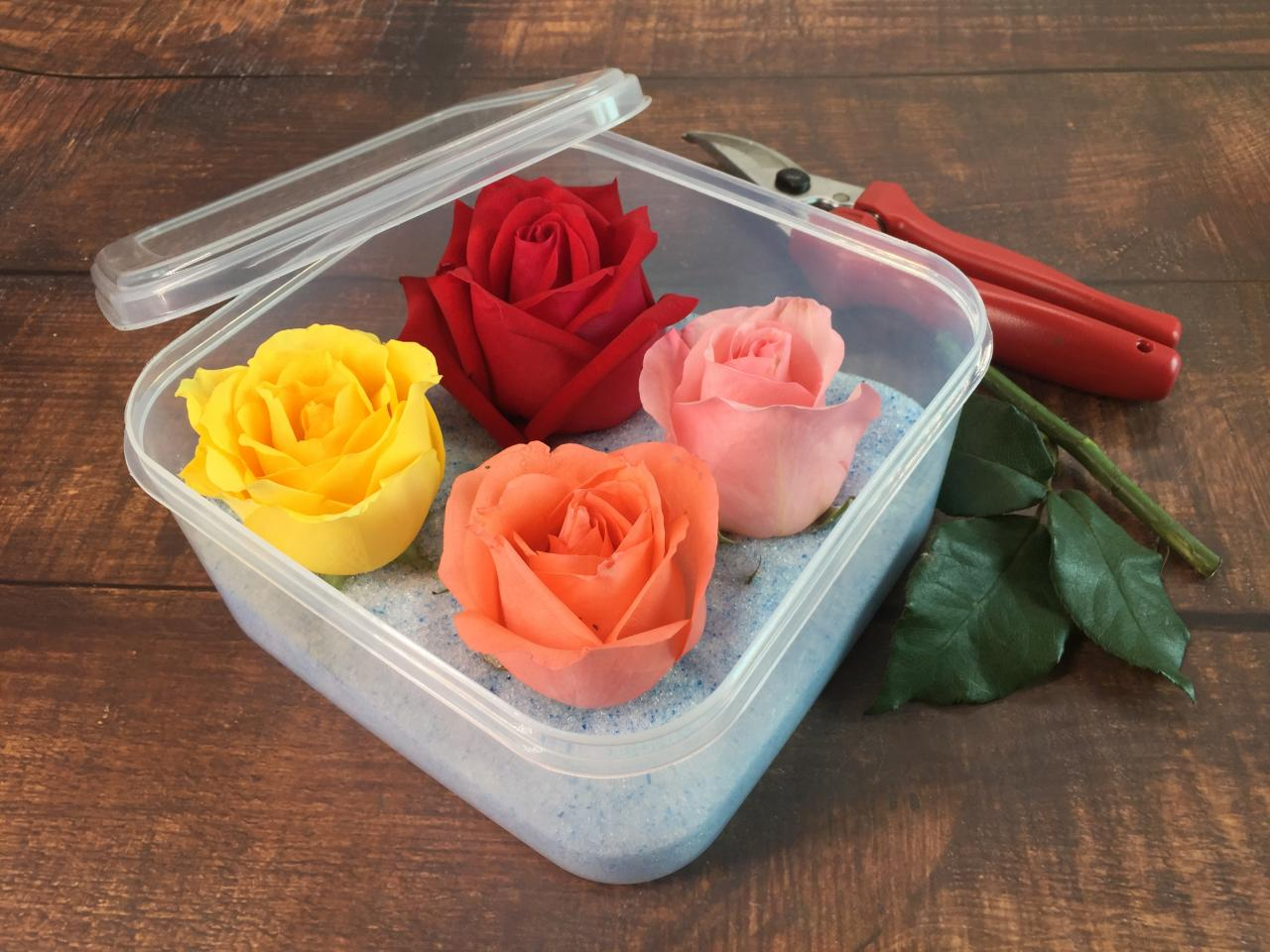 |
| Photo: Shutterstock |
Drying
One of the earliest methods of preserving flowers is by drying. Many plants retain their shape and color when air-dried naturally.
Use of glycerine, making the preserved plant supple and long-lasting. To use this method, the plant material needs to be gathered in a fully hydrated state. Water and glycerine are then mixed. The ratio of water to glycerine should be 2:1. The water should be lukewarm for better mixing and faster absorption. If the autumn colors are showing, it may be too late to preserve them in glycerine.
Pressing is a very easy way to preserve flowers although the relief is lost and the flowers are flat. Unglazed paper, such as newsprint or an old telephone book, is best for pressing. Flowers are spread so they do not overlap between several thicknesses of newspaper. Additional layers of paper and flowers can be built up and then covered with a board or piece of cardboard before pressing down with a heavy object. The time required for drying, depending on the flower size or tissue content, can be anywhere from two to four weeks.
Modern preservation methods
Hanging flowers in ventilated area: There are several air-drying methods used for different kinds of flowers. The easiest and most effective way to dry most flowers is to tie them in small bundles with twine, raffia or ribbons, and hang them upside down, out of direct sunlight in a warm, well-ventilated place. Bunches should contain one type of flower. Large flowers are dried individually. The leaves stripped as soon as possible after picking. They retain moisture and slow down the drying process. Wall hooks, poles or wires are placed at least six inches from the ceiling. Heads should be staggered to allow plenty of air to circulate. This prevents mildew and rot. It may be necessary to re-tie bunches or individual flowers half way through the drying process, because the stems tend to shrink as they dry.
The drying period can range from one week to several weeks depending on the type of material, when and where it was harvested and the humidity of the place where it is drying. The stems of hung flowers tend to dry unnaturally straight and the flowers become very brittle.
Hot air drying in drying chamber: Compact flowers like marigolds, chrysanthemums, cornflowers and zinnias dry well in a fan-assisted, convection chamber. Non-ventilated chambers are not appropriate, because they generate too much moisture. The material must be dried at a low temperature (30-35˚Celsius), over many hours. The flowers are slotted through holes in a wire mesh rack leaving room for the stems to dangle below. The time required depends upon the density of the flowers.
Silica gel drying: Another trend is silica gel. Its initial cost is greater than that of borax-sand or borax-cornmeal combinations, but silica gel can be used over and over for many years. Silica gel dries flowers quickly, so it can be used to dry more flowers during a single season than the same quantity of a borax mixture. Silica gel is available under a number of trade names. It is white, but some types contain blue crystals that act as an indicator of the amount of moisture that has been absorbed. When these crystals are clear blue, the material is dry. As moisture is absorbed from the flowers, the crystals gradually turn pink. At that point, it is time to re-dry the crystals before using them again.
Molecular sieve: Molecular sieve is a material containing tiny pores of a precise and uniform size that is used as an absorbent for gases and liquids. They are metal alumino silicates which have a crystalline structure consisting of an assembly of tetrahedral. The tetrahedral are made up of 4 oxygen atoms which occupy the summits surrounding either 1 silicon atom or an aluminium atom placed in the center. Compensating cations (sodium, potassium) make the hole electrically neutral. The hole forms an assembly of small cells (or pores) of uniform and known size, in which a molecule of smaller size can be trapped by the phenomenon known as absorption.
To ensure the dehydration of the fresh natural flowers the mixture of organic solvents is poured onto the hole until the level exceeds the level of the flowers by about 2 cm. The water molecules are progressively absorbed into the small cells or pores of the molecular sieve.
The receptacle is closed hermetically for a few days.
Once dried, the flower reabsorbs a little moisture of atmospheric origin, and this increases its suppleness and its plasticity.
Freeze drying: Originally introduced in 1813 by William Hyde Wollaston to the Royal Society in London, it was not until the late 80's the freeze-drying industry discovered the allurement and longevity of freeze-dried flowers.
Freeze dried flowers are fresh flowers that have been specially dried to preserve their natural shape and color. Freeze drying is accomplished by a process called sublimation. It requires a special freeze-drying machine.
It involves first freezing the flowers at 100K for at least 12 hours. A vacuum pump slowly pulls the moisture out of the flowers as a vapor in one chamber, and then the vapor condenses as ice in another chamber. Because of this process, the shape and natural color of the flower is maintained. It has been found that certain flowers retain their color well despite the fact they have been freeze-dried. Apparently, such flowers retain their color due to the tissue composition of the petals, leaves, and the like. Carnations, African violets, roses, asparagus and other ferns, and baby's breath exhibit good color retention notwithstanding the dehydration during the freeze-drying process. Those floral pieces which either dull or fade from dehydration may be given color by utilization of a florist's spray tint. This spray coloring restores the lost color which, in the sealed environment of the glass container of the final product, retains its given color along with the natural color of the other pieces.
Pressed: This floral preservation has its roots in Victorian times, but has also been brought into the current list of Floral Preservation because of new techniques of pressing, vacuum sealing and color enhancing. Pressed Floral Preservation involves pressing the flowers, using many different types of presses, depending on the flower type. The art is then framed in a flat frame, to hang on the wall. Vacuum sealing the art is recommended and the use of Museum Quality glass with a UV Factor of 97% to ensure the colors last.
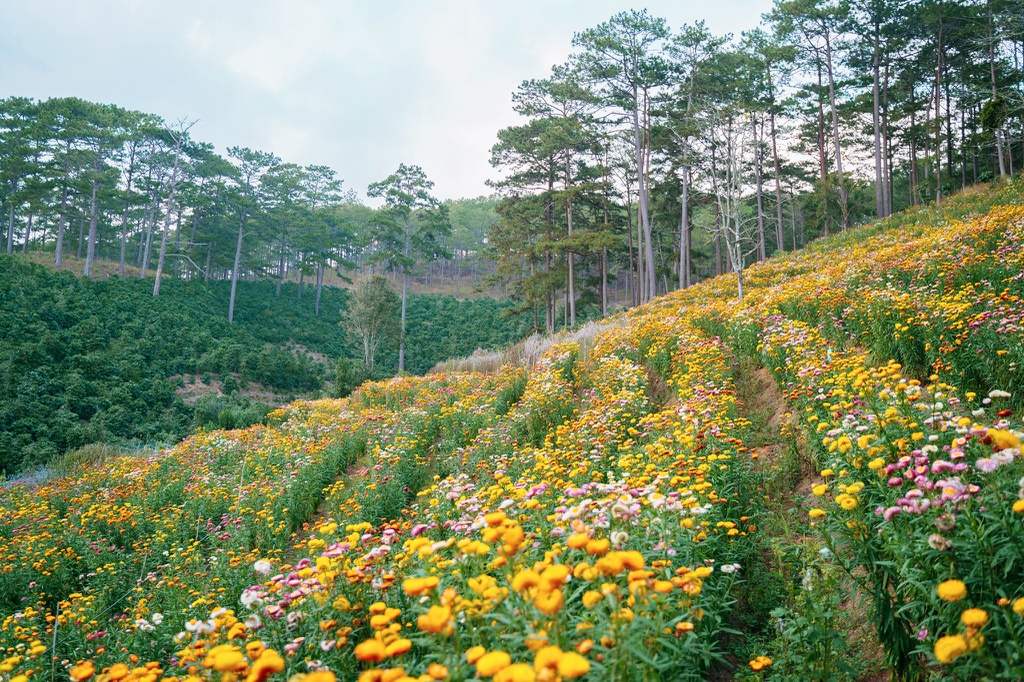 | Discovering the dreamy strawflower hill in city of flowers Dalat When the tourists visit Dalat (Lam Dong), they will get lost in a world of thousands of flowers covering the hill-side, creating a beautiful and ... |
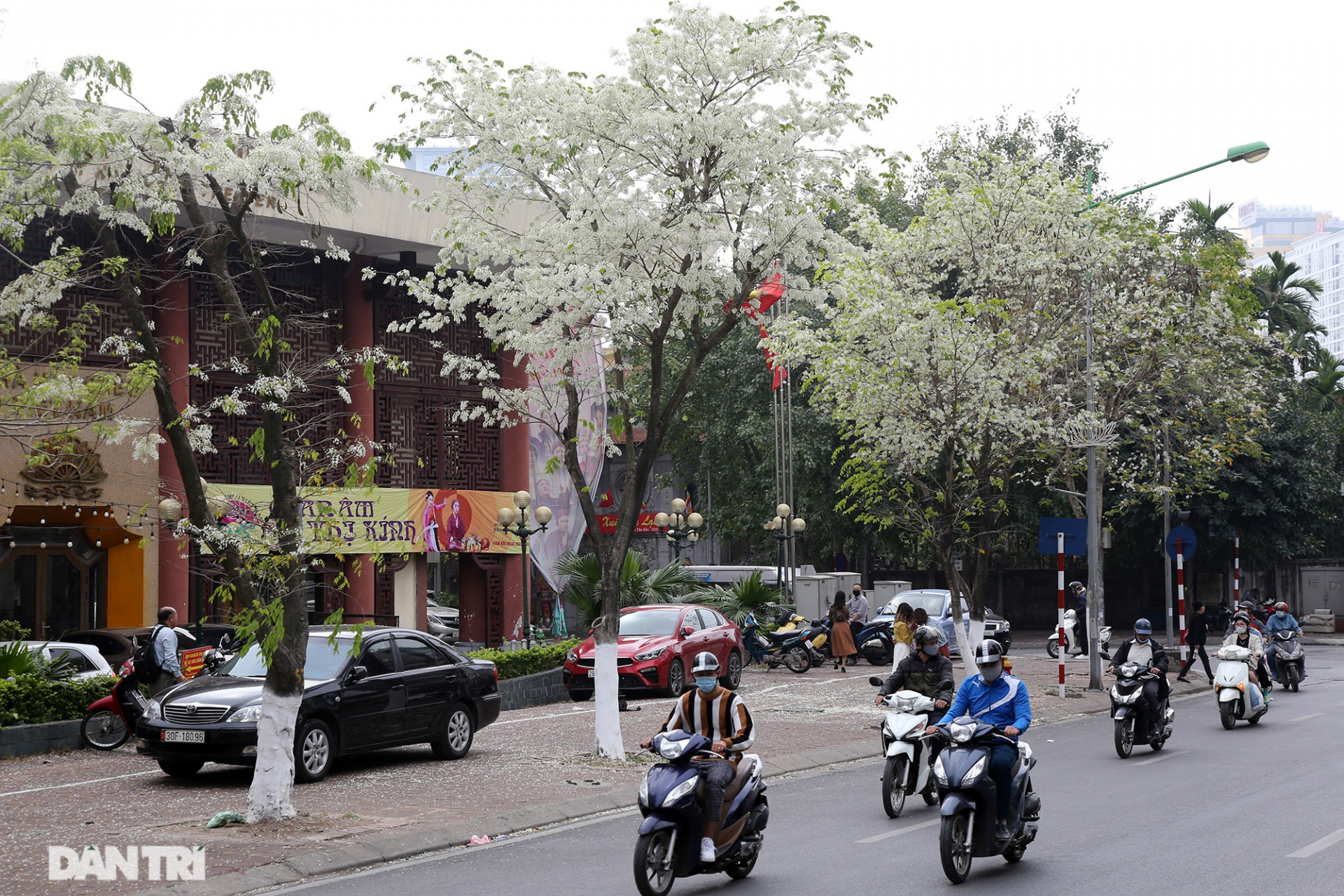 | The stunning and dreamy beauty of Sua Flowers blooming in Hanoi Sua Flower is blooming at this time of the year in Hanoi, covering the streets with the pure white colour, and attracting many locals and ... |
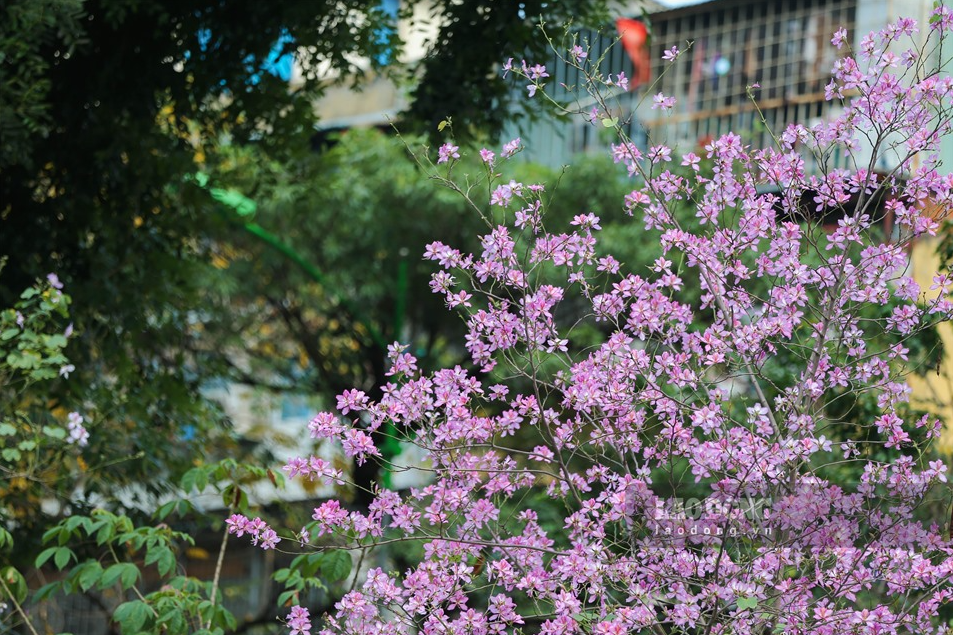 | Northwest mountain ebony bloom briliantly in Hanoi Mountain ebony - the flower carrying the breath of the Northwestern mountains seems to dispel the gray of Hanoi's cold weather, create a dreamy beauty ... |
Recommended
 Handbook
Handbook
Vietnamese Banh My Shines on Global Culinary Map
 Handbook
Handbook
Vietnam Ranks Among World’s Top 4 Most Attractive Culinary Destinations
 Handbook
Handbook
Vietnam’s AI Law to Require User Notification before AI Interactions
 Handbook
Handbook
10 Vietnamese Films Set For Screening In US To Mark 30 Years Of Diplomatic Ties
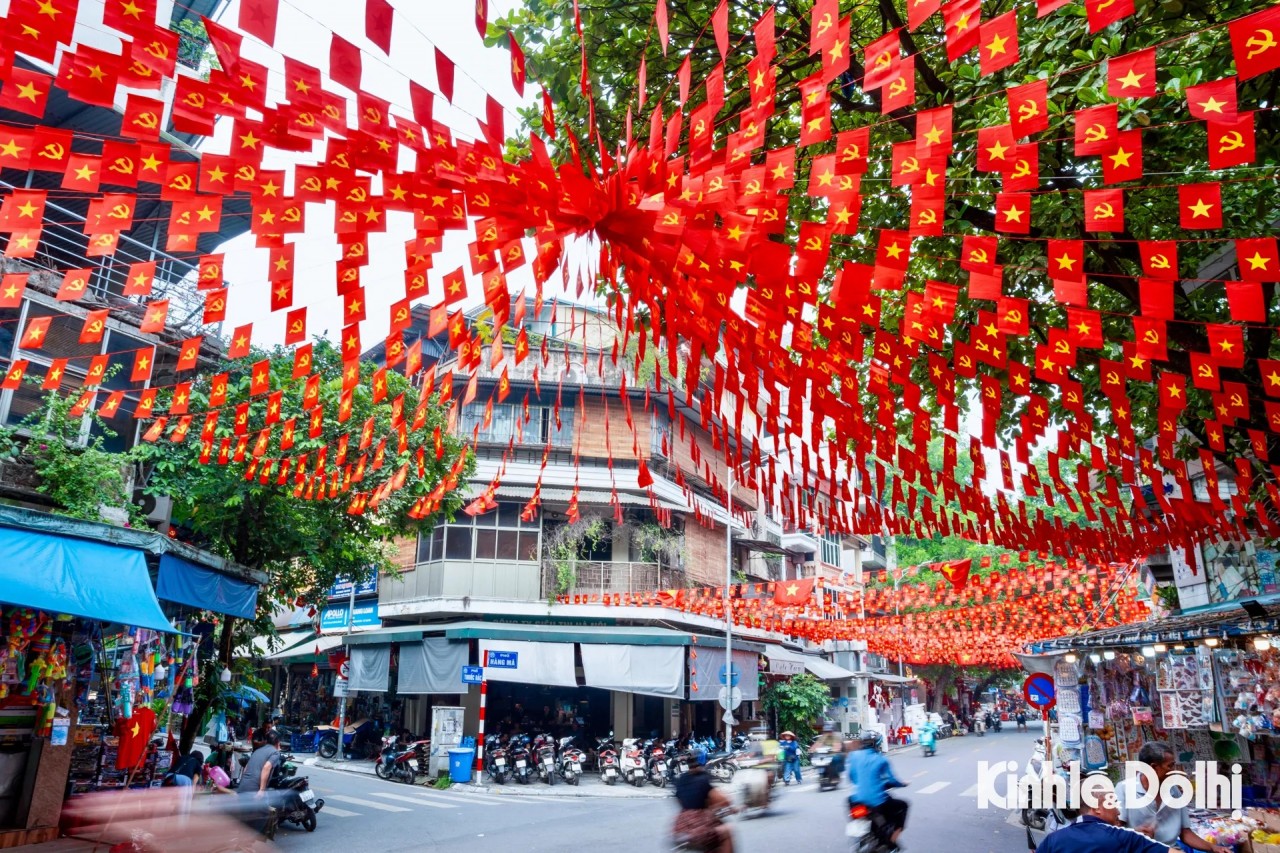 Handbook
Handbook
Time Out: Hanoi Among Most Beautiful Autumn Viewing Spots in Asia
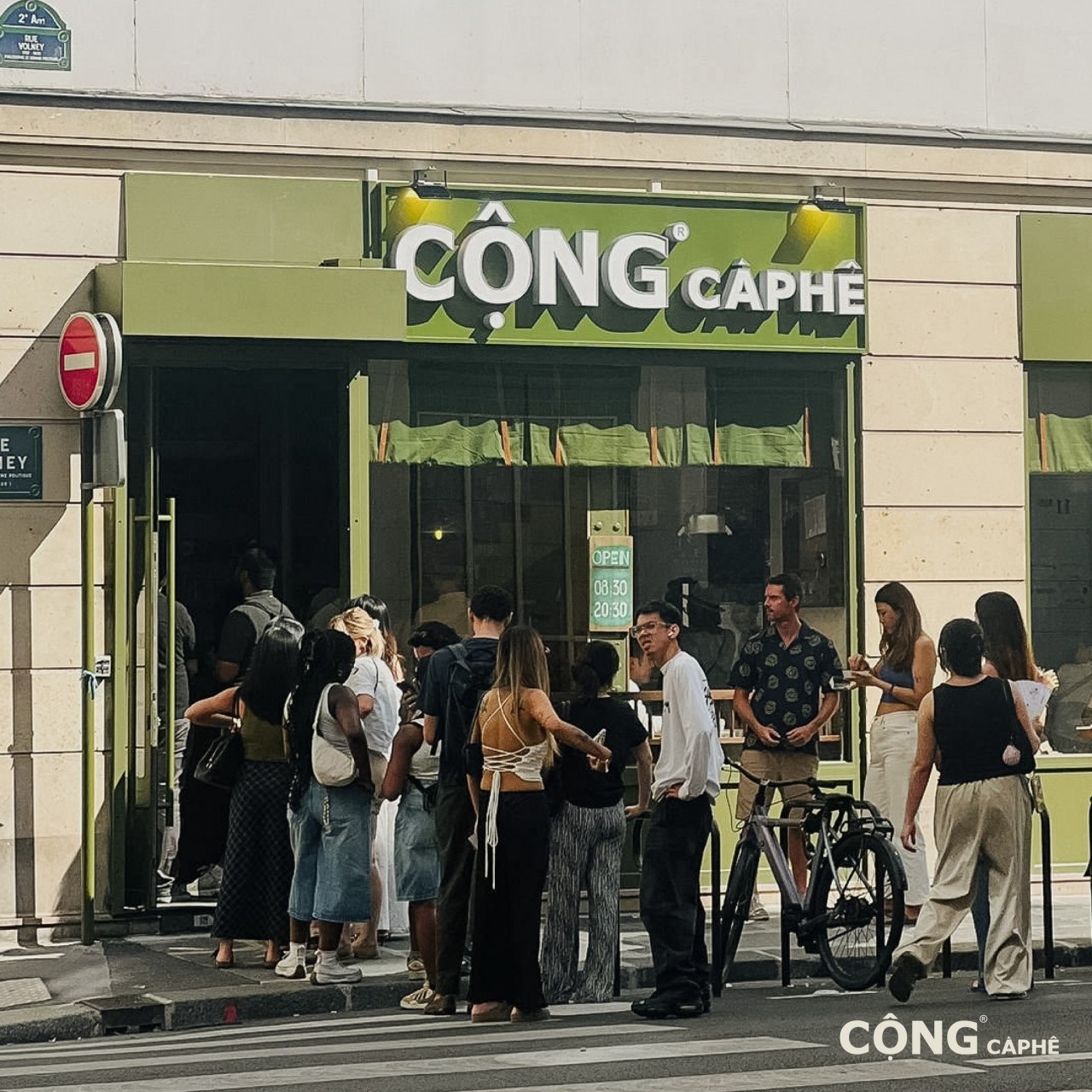 Handbook
Handbook
Vietnamese Coffee Conquers Paris - More Than Just A Brew
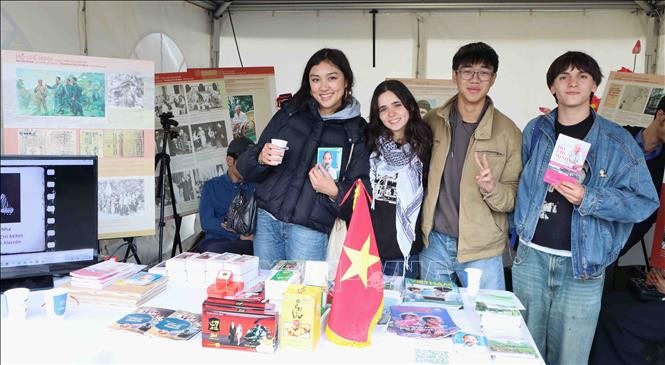 Handbook
Handbook
Belgium: Vietnamese Booth Leaves Strong Impression at ManiFiesta Festival 2025
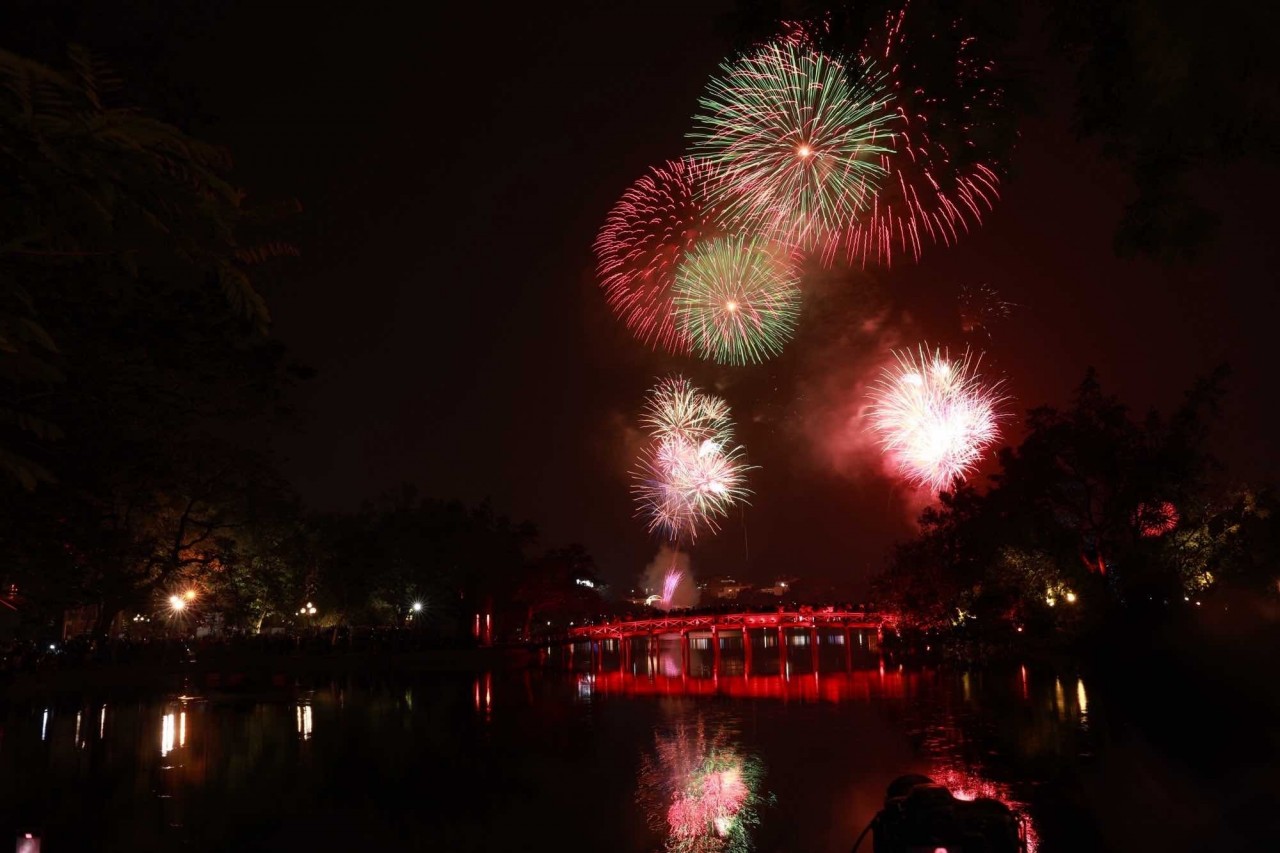 Handbook
Handbook

